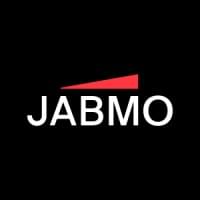Introduction
Of all the innovations that have gone to market and captured the interest of B2B professionals in the past decade, account-based marketing (ABM) takes the cake for reach and hype. As a formal process supported by technology, it has only been around for a few years, but 90 percent of marketers already call ABM a “must-have,” according to SiriusDecisions.1 Roughly 52 percent already have ABM pilot programs in place. If you’re planning to make an ABM platform part of your marketing strategy, you won’t get far without the necessary tools and systems. The sales team is already hard at work pursuing specific accounts based on their buying propensity and potential customer value. To support their efforts, you’ll need to align technology as well as strategy, but the market can be hard to comprehend for a first-time buyer.
In this guide, we’ll divide account-based marketing software into three major categories (predictive analytics, marketing automation, advertising automation), provide tips for your purchase decision, and highlight a case study from a leading vendor.
Understanding Account-Based Marketing
The consulting firm ITSMA takes credit for coining the term “account-based marketing” in 2004. According to their definition, ABM is “a vital strategy for companies that want to create sustainable growth and profitability within their most important client accounts . . . [and] a collaborative approach that engages sales, marketing, delivery, and key executives toward achieving the client’s business goals.”2
This definition paints a broad picture of ABM as a discipline, but it doesn’t speak to its history or the moving parts that make it work. The idea of targeting specific accounts and groups of decision-makers within those accounts is nothing new. Sales teams have been using this tactic to maximize revenue since the Mad Men era. Only recently — thanks to a new wave of technology — have marketers been able to contribute in a meaningful and measurable way.
ALSO READ: Land and Expand: Selling ABM to Internal Stakeholders
ABM tools give marketers the ability to build scalable, personalized campaigns, measure their results against a set of KPIs, and prove revenue contribution. But account-based marketing isn’t just a new software platform; it’s a larger strategy that changes the way marketers drive business. Instead of filling your top-of-funnel programs with thousands of leads and isolating the most qualified over time, an ABM tool is about identifying the best opportunities up front and dedicating resources to those accounts. It also acknowledges that most B2B purchases aren’t made by individual leads, but by a group of decision-makers with different objectives and different reservations. Thus, instead of “lead conversion,” the goal of an ABM platform is to create consensus and advocacy among the buying group.
ABM tools help you dig deep into a company’s employment tree to find the right decision makers. Instead of blasting ads in front of disinterested viewers, you can focus your efforts on stakeholders from your target accounts directly influence key buying groups.
In the digital age, ABM becomes useful when supported by the right matrix of tools and systems. The recent upsurgence of ABM software vendors, in part, explains why so many companies are putting ABM on their agenda. But it’s more than hype: according to the 2016 #FlipMyFunnel ABM Benchmark Survey, 71 percent of B2B marketers plan to purchase ABM tools this year.3
ABM tools help you gather and analyze account data and turn your strategy into a live campaign. A well-constructed ABM stack can offer a number of significant benefits for B2B marketers (and salespeople):
- Account-level personalization: Instead of trying to engage a broad prospect audience in a certain market, you can present content and offers that reflect the unique attributes of your target accounts. This applies to site content as well as display ads, email, and in some cases, direct mail.
- Account-level analytics: ABM software gives you the ability, through closed-loop reporting, to trace your efforts to specific financial outcomes. In the era when marketers face increasing pressure to impact revenue, account-level analytics are a requirement.
- Strategic alignment: With the power to identify, track, target, and engage specific accounts, marketing will be much better equipped to support the efforts of the sales team. The sales team will gain a medium for communicating objectives and a more useful body of intelligence for each opportunity they pursue. Of marketing departments pursuing account-based marketing, 74 percent say they work with sales to define account goals and plans.1
- Improved prospecting: As you research and develop processes to identify target accounts, you’ll build a deeper understanding of your ideal customer profile(s). Some ABM tools can do the data mining and account-identification steps for you, which means you can bring in new business faster and with greater accuracy.
Of course, not all ABM tools are created equal, or even called by the same name. The software and platforms you purchase will depend on which ABM tactics you plan to pursue. In the following section, we’ll divide the market into three major categories and provide examples of each.
ALSO READ: What Does ABM Mean for the B2B Sales Funnel?
I. Predictive Marketing Software
Predictive marketing software offers many different capabilities, but its overlap with ABM occurs during the account identification process. Predictive analytics tools (also referred to as “predictive marketing” or “sales intelligence”) can mine your existing customer data, use pattern recognition to build a set of ideal account profiles, and help you find new leads and accounts that match. Most platforms consist of two main components: data mining (analyzing your CRM and marketing databases), and data aggregation (pulling in new data from public directories, social media, and third-party sources).
The goal here is to build a database of qualified accounts and define where sales and marketing should focus their efforts. Predictive marketing software automates some of this process by identifying firmographic patterns. Depending on the vendor, a predictive marketing platform may be able to isolate accounts based on criteria such as:
- Industry
- Company size
- Geographic location
- Revenue
- Technographics (what technology they currently have in place)
- Lifetime value potential (which products and services they might implement)
According to a recent study by Everstring, of marketers already running ABM campaigns, 80 percent believe predictive marketing is “a critical piece of the marketing stack.”4
Leading Vendors: Everstring>, Infer, Radius, Datanyze, Linkedin Sales Navigator
II. Advertising Automation Software
Advertising automation gives you the ability to manage offers and messages being presented to accounts as members of their buying group visit your site, leave your site, and travel to other destinations. Since most of the early ABM software vendors have focused on personalized advertising and retargeting, many software buyers think these are the essence and entirety of the ABM software market.
Of course, the reality of ABM — and the technology stack which supports it — is far more complex. But personalized advertising and retargeting is an important strategy for creating awareness at the beginning of the buying cycle. With the right approach, a personalized message and relevant offer can direct a decision-influencer to one of your product or landing pages and get the ball rolling for future engagement. Marketo, for example, saw a 33 percent increase in conversion rates and a 20 percent increase in qualified leads by targeting specific accounts with display advertising.5
Many platforms that specialize in advertising automation, personalization, and retargeting also provide a reporting component, which gives marketers the ability to track digital behavior and engagement at the account level. That said, you’ll usually find more advanced reporting capabilities in an enterprise marketing automation or business intelligence platform.
Leading Vendors: Terminus, Demandbase, Engagio
III. Marketing Automation Software
Marketing automation platforms typically serve as an operational hub and data management tool for all of the campaigns a company has in play. ABM campaigns are no exception, especially given the number of moving parts they entail. You might use a predictive tool to identify new target accounts, and an advertising automation tool to engage those accounts online. You also might run co-marketing, email, direct mail, and event marketing plays.
What happens to all of the data and analysis from these initiatives? Without a centralized tool, it can be nearly impossible to track performance, let alone know when an account is ready for sales follow-up. According to Aberdeen, 96 percent of marketers are not satisfied with their ability to capture, store, analyze, and use customer data.6
A marketing automation platform — especially when integrated with your CRM — is the perfect tool to manage ABM efforts. You can build custom email campaigns to nurture accounts and measure engagement across multiple channels (similar to lead scoring in lead-level marketing). If you’re running more than a few ABM plays at a time, this capability is a must. Keep in mind, not all marketing automation vendors offer these features. If you’re using an entry-level or small-business platform you may need to upgrade or see what reporting capabilities your CRM offers.
Leading Vendors: Marketo, Eloqua, Pardot
Case Study
Company: SuccessFactors7
Solution: Demandbase
SuccessFactors — founded in 2001 and acquired by SAP in 2012 — is one of the world’s leading HR software vendors. During the SAP acquisition, it was decided that SuccessFactors would remain an independent company and operate under the moniker, “SuccessFactors, an SAP Company.” As such, they would remain responsible for driving digital traffic and demand.
The Challenge
SuccessFactors faced a couple of sizable challenges during this period of their. First, they needed to target and move SAP’s on-premise customers to the SuccessFactors cloud platform. Second, they need to improve their website and integrate digital messaging with larger demand gen strategies.
The Solution
Sean Browne, SuccessFactors’ director of web marketing, lead the search for a new solution. Browne started by rolling out Adobe’s Experience Manager content mangement platform, but needed a tool that would let him target anonymous visitors. Soon thereafter, he discovered Demandbase, whose solution integrated directly with Adobe. SuccessFactors built their new site with Demandbase’s targeted, dynamic promotions baked directly in. They used company-targeted advertising to increase marketing opportunities and Adobe Analytics to identify companies visiting their site, by industry and segment. Demandbase’s web forms feature helped them improve accuracy and completeness by auto-populating fields based on data discovered.
“Targeting is fundamental to the way we sell,” Browne said. “I had the advantage of being able to revamp the entire site and put it on a new platform . . . I truly believe Demandbase can make marketing a hero to sales.”
Results
- 175 percent year-over-year growth in web leads
- Increased engagement with all visitors, even anonymous ones
- Higher web conversion rates, thanks to personalized promotions
Top ABM Tools
Not all ABM platforms are built equally. As with any new vertical, the enthusiasm around ABM encouraged a boom of new vendors. Some platforms that promised game-changing, paradigm-shifting ABM features do nothing more than your average CRM or marketing automation tool. Either that, or the new “feature” is a static webpage explaining how, if you really strain, you can use the vendor’s existing features to support ABM. For your research, we’ve gathered a list of top account-based marketing tools.
Marketo

Marketo, and Adobe company, has long been a leading marketing automation platform, but the addition of ABM tools like account scoring and custom segmentation lets you focus on the metrics that matter for your campaign. Predictive segmenting uses behavioral data to drive email segmentation, and account-level predictive analysis shows which accounts have the most revenue potential, so you know where to invest your efforts. Marketo also includes advanced features for email, social media, mobile, and analytics, as well as native CRM integration, to help you build a complete sales+marketing tool that covers every channel.
Infer

Infer is a predictive marketing solution that aggregates data from your internal sources and all across the web to build a comprehensive view of potential leads. It collects external signals and publicly shared data, then runs that data through a series of algorithms to inform lead, account, and behavioral scoring. You can combine the resulting scorecards with industry and title-based personas and custom segmentation to pinpoint the best opportunities. Infer also provides lead-to-account matching to help you match individual lead data with corresponding accounts in your CRM. Just keep in mind, Infer is meant to be an add-on, not an autonomous platform. You’ll need to connect the rest of your software stack to build these insights.
Terminus

You can’t talk about ABM without talking about Terminus. This software company really promoted the ABM movement with FlipMyFunnel, an ABM learning community and conference. Terminus supplies over 200 million B2B professional contacts in their searchable database. When you’ve selected your accounts, you can use the connections to over 50 ad exchanges to engage those accounts, and use the platform’s customization rules to display personalized mobile, social, display, and video content. Other features include account level attribution and bidirectional Salesforce integration. Terminus promises fast on-boarding: you can get a basic campaigns running in less than 30 minutes.
DiscoverOrg

DiscoverOrg provides sales intelligence for B2B companies, meaning it works best as an add-on to your existing programs. DiscoverOrg makes some big promises about data validity: internal researchers update contact information every 60 days, and they guarantee a 95 percent accuracy rate for email addresses, titles, and phone numbers. These accurate and deep contact lists will help you build a more complete picture of accounts so sales can target the right decision makers. An alert feature called OppAlerts lets you know when account priorities or needs shift due to a job or vendor change. Similar to Infer, DiscoverOrg uses predictive intelligence and is a great tool to use during the account list-building phase of ABM.
Demandbase

Demandbase’s platform offers built-in account-based advertising and retargeting with major ad networks. These ads target your ABM segments for a personalized experience and a tighter sales funnel. The marketing capabilities include account-aware website personalization for site pages that meet each lead/account at their appropriate buying stage. The Demand Graph feature builds a complete map of all accounts and their contacts (customers, vendors, investments, etc.) to help you understand company relationships and specific lead needs.
Jabmo

Jabmo is great for the sales team that never sleeps: The platform monitors your website to update you on lead behavior, and it sends instant, scored notifications when prospects engage with your content. When a lead is hot, your team can connect them with more targeted content that or even a phone call. Jabmo catalogs and analyzes IP addresses, cookies, and behavioral data, then uses these to automatically build target account lists. You won’t waste money on wide-net ads or retargeting, since content is only served to those accounts that are likely to convert. Similar to Engagio, Demandbase, and Terminus, Jabmo provides built-in account-level analytics to help your teams track the impact of their campaigns.
Choosing the Best Account-Based Marketing Software
TechnologyAdvice helps businesses find the best technology for their needs. We’ve compiled product information, reviews, case studies, features lists, video walkthroughs, and research articles on ABM software to make the buying process more straightforward for decision-makers like you.
If you’re curious about any of the account-based marketing solutions or vendors listed in this guide, we’d love to talk. Call one of our in-house specialists for a free consultation, or use the Product Selection Tool on our site to get a custom recommendation based on your industry and feature requirements.
Have Questions?
Our team of experts is ready to help! 877.702.2082
Sources
- “More than 90 Percent of Marketers Believe that Account-Based Marketing is a B2B Must-Have.” PR Newswire. Last modified April 30, 2015. http://www.prnewswire.com/news-releases/more-than-90-percent-of-marketers-believe-that-account-based-marketing-is-a-b2b-must-have-300074923.html
- “Account Based Marketing.” ITSMA. Accessed June 27, 2016. http://www.itsma.com/abm/
- “2016 #FlipMyFunnel Account-Based Marketing Benchmark Survey Report.” Accessed June 27, 2016. http://flipmyfunnel.com/wp-content/uploads/2016/04/2016_FMF_ABM_Benchmark_Survey_Report.pdf
- Lefkowitz, Rachel. “80% of Marketers Using Account-Based Marketing Believe that Predictive Marketing is a Critical Piece of the Marketing Stack.” Everstring. Last modified November 12, 2015. http://www.everstring.com/blog/80-of-marketers-using-account-based-marketing-believe-that-predictive-marketing-is-a-critical-piece-of-the-marketing-stack/
- “Account-Based Marketing 101: A Marketo Case Study.” Marketo. Accessed June 27, 2016. http://www.marketo.com/webinars/account-based-marketing-101-a-marketo-case-study/
- “The CMO Dilemma: Bridging the Gap Between Love and Money.” Aberdeen Group. Last modified May 2015. https://www.oracle.com/marketingcloud/content/documents/whitepapers/cmo-dilemma_bridging-the-gap.pdf
- “SuccessFactors Powers Website Optimization with Demandbase.” Demandbase. Accessed June 27, 2016. https://www.demandbase.com/case-study/successfactors-powers-website-optimization-with-demandbase/